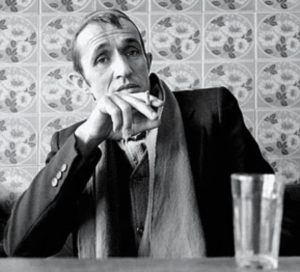Biography

Born in Turin in 1940, Alighiero Boetti was one of the most important representatives of Arte Povera, one of the most interesting currents of modern and contemporary art. At the same time he was one of the first artists to detach himself from the movement to experiment with new areas of application and unprecedented artistic research. After studying Economics and Commerce in Turin, he leaves university to follow a path as a self-taught artist. Decisive for his training is the influence of Eastern and non-European cultures, as well as his ancestor, missionary in Africa and in the East, who fascinate and intrigue him by inducing him to devote entirely his artistic experimentation to the theme of exoticism. At the beginning he turned to technical art, then to oil landscapes, influenced by Russian painters and finally to engraving, which he studied in Paris. His works are characterized by the experimentation of new materials (plexiglass, masonite and plaster) and for the realization of drawings on china paper, monotypes and engravings. In the 1960s he lived in an apartment-studio in Turin, the city where he married Annemarie Sauzeau in 1964. His works are based on a great interest in everyday objects and gestures. He participates in all the most important manifestations and expressions of the Arte Povera movement, placing himself as the most important interpreter among conceptual artists. After the poor experience, in 1971 he went to Afghanistan, the first stay in a long series. In fact, he returned to the country about twice a year until 1979: in his travels he commissioned tapestries from Afghan women, to be embroidered on the basis of his indications and designs following the local artisan tradition. This is the series of works “Maps”, in which the artist and the people who carry out the project are distinct subjects. This is a real turning point in his artistic career, sanctioned by the change of the name, which becomes Alighiero and Boetti, signifying the artist’s existential crisis and, at the same time, the playful character of the double theme. He moved to Rome in the early seventies and commissioned other people to fill cardboard sheets following his instructions but maintaining a margin of freedom. These are works characterized, like embroidered tapestries, by the repetition of a minimal manual gesture. In 1974 he held his first solo exhibition in a foreign museum in Lucerne; in 1978 he followed the anthology in Basel and numerous exhibitions in the USA and Europe until the 1990s. Time, its fascinating and inescapable flow, is perhaps the unifying theme in Boetti’s typological and iconographic plurality. Among the latest works, some are monumental, such as the 50 tapestries with texts in Italian and Persian (exhibited in Paris in the exhibition ‘Les Magiciens de la terre’, 1989), or the 50 khilim exhibited at the Magasin in Grenoble in December 1993 in the last exhibition inaugurated in the presence of the artist who was already very ill at the time. He died in Rome in 1944.